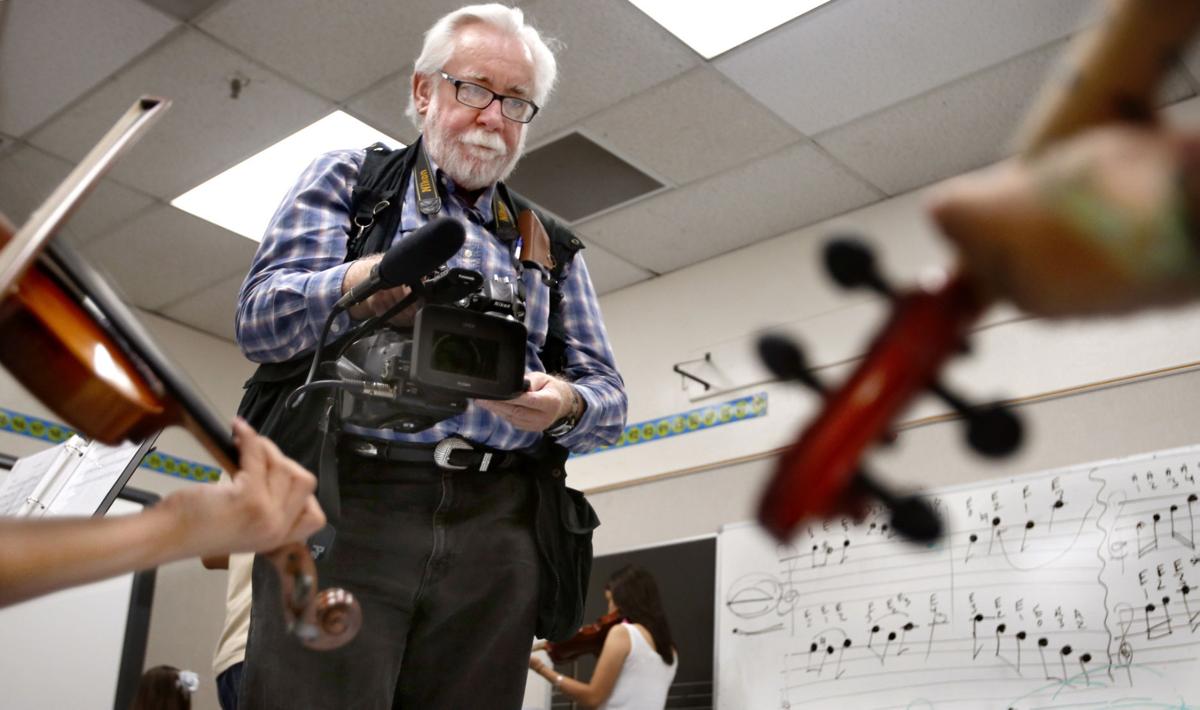* ENGLISH VERSION BELOW
La historia de cómo surgió La Estrella de Tucsón es una historia inusual.
Originalmente, la idea de una publicación en español e inglés fue concebida por el Tucson Citizen, que hasta su cierre en 2009, tenía un acuerdo operativo conjunto con el Arizona Daily Star. Según ese acuerdo, los dos periódicos eran editorialmente independientes pero compartían recursos de una tercera entidad que operaba la imprenta y creaba publicidad para ambos.
El Citizen se formó en 1870, y para su 130 aniversario en el año 2000 se decidió celebrar. Un grupo de escritores revisó microfichas de ediciones anteriores del periódico para obtener los aspectos más destacados de su historia, pero en el camino descubrió algunos escritos muy preocupantes. En los días en que el periódico estaba en manos privadas, tanto los titulares como las historias tenían muchos insultos raciales.
Roy Olivas, editor de la sección Calendario del Citizen, tenía un titular de primera plana de la década de 1950 impreso y enmarcado para colgar sobre su escritorio. El titular decía: “El autobús lleno de espaldas mojadas volcó”. Y tampoco era el título más irritante descubierto. El desarrollo de la historia no fue menos ofensivo.
La razón por la que colgaba sobre su escritorio era para recordarnos a todos que lo que escribimos se convierte en el primer borrador de la historia, y seremos juzgados por las actitudes de las generaciones futuras tanto como las nuestras.
La escritura anterior era un signo de los tiempos. También lo fue lo que nosotros escribimos.
En el Citizen, cubrir las culturas mexicoamericanas y nativoamericanas de Tucsón había sido una prioridad al menos desde que yo comencé en 1987. Pero nos quedó muy claro que había elementos de la población local de habla hispana que no estaban siendo servidos, y que había historias cada semana que serían adecuadas para un tratamiento bilingüe.
Y aunque ambos periódicos tenían escritores invitados que escribían columnas ocasionales en inglés y español, realmente no había una división de nuestro periódico adecuada para ese propósito. Y así, la lluvia de ideas comenzó a sugerir una publicación bilingüe.
Cuando el editor de Citizen, Michael Chihak, lo llevó ante la junta combinada del Star/Citizen para su consideración, algo sucedió. Nunca escuchamos la historia completa, pero al final se decidió que, dado que el Star tenía una circulación más amplia, tendría la publicación bilingüe, y así nació La Estrella de Tucsón.
En el Citizen, por supuesto, nos decepcionó no haber podido producir lo que habíamos imaginado. Pero reconocimos que al menos una necesidad en la comunidad que había existido durante mucho tiempo tenía muchas posibilidades de ser satisfecha. Y con el tiempo, particularmente en los años en que Ernesto Portillo Jr. estuvo asociado con La Estrella, se convirtió exactamente en lo que esperábamos.
Se ha creado una voz que sirve a todo Tucsón y cuenta historias importantes de sus poblaciones mexicoamericanas y latinas. Eso es algo de lo que todos podemos estar orgullosos.
ENGLISH VERSION
How La Estrella came to be is an unlikely story.
A Spanish/English publication was originally conceived of by the Tucson Citizen, which until it’s closing in 2009, had a joint operating agreement with the Arizona Daily Star. By that agreement the two papers were editorially independent but shared resources of a third entity which operated the printing press and created advertising for both. The profits were split between the two companies, then Gannett (Citizen) and Pulitzer (Star).
The Citizen was formed in 1870, and for its 130th anniversary in 2000 it was decided to have a celebration. A group of writers went through microfiche of back issues from the paper to pull up highlights of its history but along the way discovered some very troubling writing. Back in the days when the paper was in private hands both headlines and stories had many racial slurs. Roy Olivas, who was editor for the Calendar section of the Citizen, had a front page headline from the 1950s printed and framed to hang above his desk. The headline read, “Bus full of wetbacks overturned.” It was hardly the most pungent headline uncovered. And the story writing was no less offensive.
The reason it hung above his desk was to remind us all that what we write becomes the first draft of history, and we will be judged by the attitudes of future generations as much as our own.
The earlier writing was a sign of the times. So was what we wrote.
At the Citizen, covering the Mexican American and Native American cultures of Tucson had been a priority at least since the time I started in 1987. But it became very clear to us that there were those Spanish speaking elements of the local population who were not being served, and that there were stories every week that would be well suited to a bilingual treatment. And while both papers had guest writers who wrote occasional columns in English and Spanish, there really wasn’t a division of our paper suited to that purpose. And so brainstorming began to create such a bilingual publication.
When then Citizen editor Michael Chihak took it before the combined Star/Citizen board for consideration, something happened. We never heard the full story but in the end it was decided that since the Star had the wider circulation, it would have the bilingual publication, and thus La Estrella was born.
At the Citizen we were of course disappointed that we didn’t get to produce what we had envisioned. But we recognized that at least a need in the community that had existed for a long time stood a good chance of being filled. And over time, particularly in the years when Ernesto Portillo, Jr. was associated with La Estrella, it became exactly what we’d hoped. A voice has been created that serves all of Tucson and tells important stories of its Mexican American and Latino populations. That is something all can take pride in.





